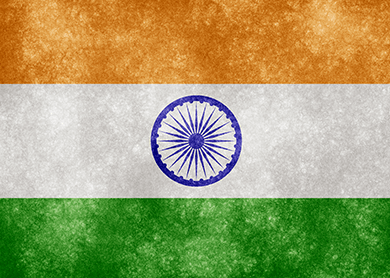
(June 11): Indian central bank Governor Raghuram Rajan needs help to spur investment in Asia’s third-largest economy.
Rajan’s three interest rate cuts this year -- the last on June 2 -- mean little to manufacturers with spare capacity, banks saddled with bad loans and heavily indebted companies.
“At this particular moment, those other economic headwinds are likely to dilute the impact of lower interest rates,” Anubhuti Sahay, an economist at Standard Chartered Plc in Mumbai, said by phone. “Just interest rates cannot push the investment cycle to kick-start.”
Rajan knows he can’t do it alone. He called on the government to step up infrastructure spending and rewrote rules to help lenders recover loans from defaulting companies. His room to ease is narrowing as rising oil prices and forecasts of below-normal monsoon rains threaten to fan inflation.
“We are under no illusion that the economy, especially investment, is up and running,” Rajan told reporters on June 2. “All the entities that are involved in generating growth have to contribute, including the banks, including the industrialists, including the government.”
Private and public investment slowed to 32.3 percent of gross domestic product in the year through March 2014 from 38.2 percent in 2011/12, the latest government data show, as India’s economy grew far below potential.
A new method this year for calculating GDP has left economists looking at a slew of indicators to assess economic strength.
Economic Slack
A measure of output in eight core industries including cement -- an indication of investment in construction -- steel and electricity fell in both March and April. The manufacturing component of the wholesale price index dropped in March for the first time since 2009, and again in April.
A crucial indicator is the central bank’s gauge of capacity utilization, which indicates whether India is firing on all cylinders. The level for manufacturing was 71.7 percent in the last quarter of 2014, barely changed from the previous three months and down from a peak of 78.4 percent in early 2012. That shows economic slack and suggests a rate cut may not achieve much.
“If I have surplus capacity and I don’t have enough demand, there’s no reason for me to invest,” said Madan Sabnavis, chief economist at CARE Ratings in Mumbai. There “won’t be any kind of large-scale increase in investment because we also have demand-side issues in the economy.”
While on the brighter side production of capital goods such as machinery is picking up, new investments in India are expected only in the year through March 2017, Standard & Poor’s analyst Michael Seewald said in a March 25 conference call.
Stressed Assets
Moreover loan growth is falling as stressed assets are projected to rise to a 15-year-high next year. Indian companies had the highest debt-equity ratio in 2013 among major Asian economies, the International Monetary Fund said in its regional outlook report published in April.
So both the central bank and India’s top executives alike are counting on the government to take the lead in spending more, especially for infrastructure.
Prime Minister Narendra Modi budgeted a 25 percent jump in spending on roads, bridges and ports, though India has a history of eventually cutting such outlays to meet fiscal deficit targets. He is now said to be proposing an infrastructure company to attract investment from sovereign wealth and pension funds, among other big organizations.
Also important will be the government’s plan to simplify taxes by replacing more than a dozen levies with a single national sales tax, and to implement laws that will make it easier for companies to buy land and do business, said Faraz Syed, an economist at Moody’s Analytics in Sydney.
“The rate cut is complementary to some of the government policies that have to get through,” Syed said by phone. “For the rate cut to be effective, the government policies have to also be effective.”